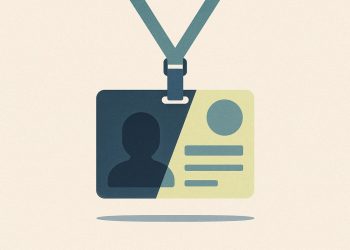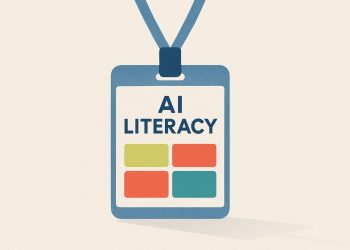In 2025, AI is changing the way people work, so professionals need to learn skills that work well with AI, like critical thinking, data reading, and good judgment. Instead of just doing one job, people should become T-shaped – very good at one thing, but also know a little about many others. Some tasks will be done mostly by AI, but humans are needed for things like solving tough problems, making ethical choices, and working with others. Apprenticeships and on-the-job training are great ways to learn how to work with AI. The key is to focus on skills that AI can’t easily copy, so you stay important at work.
How can professionals thrive in the AI-driven workplace of 2025?
To thrive in 2025, professionals should focus on developing skills that complement AI, such as critical thinking, data literacy, and ethical judgment. Embrace the T-shaped skill model – combine deep expertise with broad, cross-functional knowledge – and seek apprenticeships or on-the-job training to master human-AI collaboration.
AI is no longer a background tool; in 2025 it is a front-stage co-worker that rewrites the definition of a competitive professional. The World Economic Forum’s Future of Jobs 2025 points out that 40 % of employers expect to reduce headcount in roles where AI can fully automate the underlying task bundle, yet the same study projects net employment growth of 2 million roles in tech and information sectors by 2030. The message is clear: partial automation is reshaping jobs, not simply erasing them.
From Roles to Relevance: The Task-Bundle Lens
Work is now best viewed as a bundle of tasks with different scarcity* * (how easily AI can replicate them) and complementarity * (how much they amplify AI’s value). Roles survive when humans occupy the intersection of scarce and complementary* .
| Level of Automation Impact | Typical Tasks | Career Strategy |
|---|---|---|
| High – Fully Automatable | Data entry, routine research, first-draft content, basic coding tutorials | Reduce time spent here; automate or outsource |
| Medium – Augmented | Draft legal briefs, marketing copy, financial models, customer service scripts | Re-engineer workflow; focus on prompt design, oversight, and quality control |
| Low – Core Human Value | Ethical judgment, stakeholder negotiation, strategic framing, complex problem diagnosis | Double down; these tasks remain scarce and complementary |
Building the T-Shape: Depth and Breadth
Well-known since the 1990s, the T-shaped professional model – deep expertise in one domain plus broad cross-functional literacy – is now the de-facto blueprint for AI-era careers. In 2025, organizations operationalize it through skills matrices and cross-training rotations:
| Vertical (Depth) | Horizontal (Breadth) | Integration Example |
|---|---|---|
| Domain Lawyer | Prompt engineering, AI risk governance | Review AI-generated contract drafts for compliance |
| Oncology Nurse | Data literacy, patient-facing AI tools | Interpret AI triage alerts and explain treatment trade-offs |
| Supply-Chain Analyst | Python basics, human-AI teaming | Co-design dashboards that blend AI forecasts with human exceptions |
Practical templates are publicly available:
– Nestor’s visual skills matrix guide
– Illinois HR T-shaped reflection worksheet
Most Wanted Skills for Non-Tech Professionals (2025-2026)
| Skill Cluster | What You Actually Do | Demand Signal |
|---|---|---|
| Critical thinking & verification | Fact-check AI outputs, identify bias, apply domain constraints | Pearson TalentLens calls this the #1 “complementary to AI” skill in 2025 |
| Data literacy | Read dashboards, assess data quality, translate insights into business language | Rutgers Executive Education includes data fluency in every 2025 program for non-technical leaders |
| Human-systems collaboration | Prompt, test, and govern AI tools inside workflows; communicate risk and ethics | K-State’s Center for Digital Business lists prompt design and ethical governance as core modules for 2025 |
Apprenticeships: The New Entry Gate
As AI hollows out classic entry-level task ladders, registered apprenticeships and structured on-the-job training are re-appearing at scale:
- Community College + Employer Consortia: Georgetown CSET documents $265 M federal grants (2021-) linking colleges with employers to deliver AI-ready apprenticeships.
- Rotation Design: Apprentices rotate through compliance, analytics, and customer-facing teams, learning to prompt, evaluate, and supervise AI outputs – work that used to be “learn by doing” routine tasks.
Quick Action Checklist
-
Map your task bundle
– List 10 tasks you own.
– Score each 1-5 for AI automatability and AI complementarity.
– Focus skill development on high-complementarity, low-automatability tasks. -
Build horizontal breadth intentionally
– Pick one adjacent skill (e.g., prompt engineering, data visualization, stakeholder translation).
– Commit to a 6-week micro-credential or cross-functional rotation. -
Join an apprenticeship or cohort-based program
– Ask HR or local community college about AI-focused registered apprenticeships; demand is rising and employers are paying for seats.
The fastest way to future-proof a career is not to outrun AI but to stand where it can’t reach without you.
What does it mean to be “T-shaped” in an AI-first workplace?
T-shaped professionals combine a deep spike of expertise in one domain with a broad set of cross-functional skills. In 2025 this design is no longer a metaphor – it is the literal architecture that career ladders, hiring rubrics and L&D budgets are built on.
- Deep (the vertical bar) = 1-2 skills that are hard to automate (e.g. regulatory interpretation, clinical judgment, complex stakeholder negotiation)
- Broad (the horizontal bar) = AI literacy, data interpretation, prompt engineering, ethical governance and human-system teaming
Stat: 78 % of Fortune 500 job descriptions posted since January 2025 now contain a T-shaped skills matrix as a screening criterion (Nestor Talent Intelligence, 2025).
How do I identify which of my tasks are safe versus automatable?
Think of your role as a bundle of tasks, then score each task on two axes:
| Factor | Low Risk (keep) | High Risk (automate or delegate) |
|---|---|---|
| Scarcity | Requires rare human judgment, context or ethics | Repetitive, rules-based, fully digitized |
| Complementarity | Makes AI more useful (e.g., prompt refinement, QA, client translation) | Competes with AI (e.g., first-draft writing, data entry, basic coding) |
Quick exercise: List your weekly deliverables. Anything that scores low on both axes is a skill-development priority.
What specific skills should non-tech professionals add in 2025-2026?
Recent executive-education research flags three clusters that are rising fastest in demand outside technology teams:
- Critical evaluation of AI outputs (source-checking, bias detection, ethical framing)
- Data fluency (interpreting dashboards, asking smart questions, communicating uncertainty)
- Human-AI teaming (prompt engineering, workflow design, human-in-the-loop governance)
Case in point: A major U.S. hospital network reduced diagnostic coding errors 31 % after training its non-technical billing staff in prompt validation and AI-output auditing (Kansas State Center for Digital Business, Apr 2025).
Are entry-level jobs really disappearing, or just shifting?
Both. AI is eliminating rope-learning tasks (research synthesis, first-draft reports) and creating checkpoint roles (review of AI outputs, client-facing explanation, compliance sign-off).
- By 2026 employers expect to cut 40 % of traditional junior headcount where AI can fully automate tasks, yet add 2 million net new roles that require AI-augmented judgment (World Economic Forum, Future of Jobs 2025).
- Bridge strategy: Registered apprenticeships now combine classroom AI literacy with paid, on-the-job rotations through AI-augmented workflows – a model scaled by 265 USD million in federal grants since 2021.
How can I start building a T-shaped plan this quarter?
Follow the 3-2-1 sprint:
- 3 weeks: Map your current task bundle using the scarcity/complementarity matrix above
- 2 conversations: Ask your manager which adjacent skills the team needs for AI collaboration (data storytelling, prompt QA, ethics review)
- 1 micro-credential: Enroll in a 4-6 hour verified course on prompt engineering, AI ethics or data interpretation that maps to the horizontal bar
Resource: The University of Illinois publishes a free T-shaped skills reflection worksheet and 90-day development plan (download PDF).
Bottom line: Relevance is the only credential that counts in 2025. If your skill set is both scarce and complementary to AI, your next decade is already under construction.



















